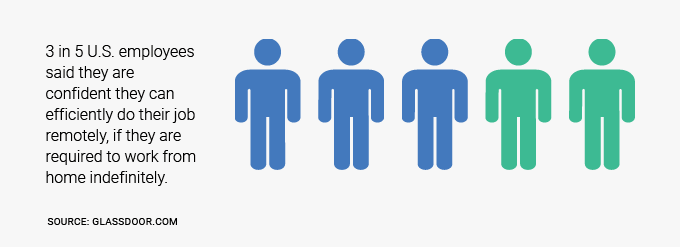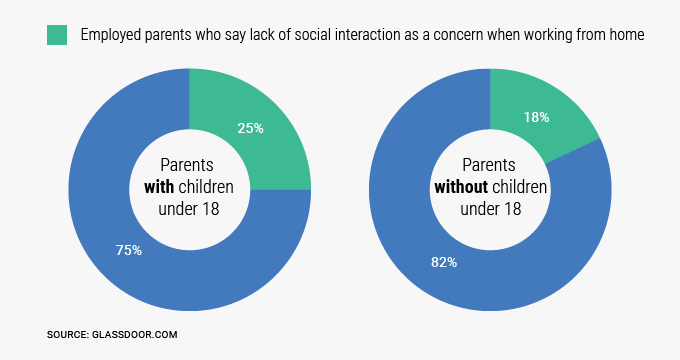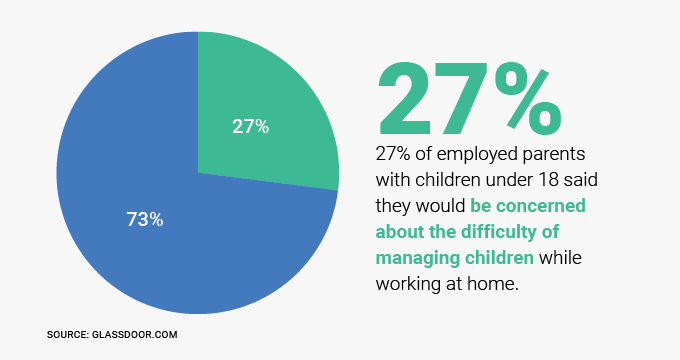
Tech-based tools can help alleviate the pressure felt by leaders to onboard, train and engage with employees during the coronavirus outbreak.
by Elizabeth Loutfi-Hipchen
March 26, 2020
Workplaces across the world are closed for several weeks or the foreseeable future. As the coronavirus outbreak runs its course, leaders need easy solutions in the absence of face-to-face interaction.
 The number of Americans who typically work from home either fully or part of the time is on the rise, according to Gallup, though most employees still report to an office or teamwork setting on a weekly basis. According to Axios, less than 4 percent of Americans typically work from home full time. However, the coronavirus is challenging office-based workforces across the globe to adapt to a largely inflexible plan: to socially distance themselves from each other and to work from home, indefinitely.
The number of Americans who typically work from home either fully or part of the time is on the rise, according to Gallup, though most employees still report to an office or teamwork setting on a weekly basis. According to Axios, less than 4 percent of Americans typically work from home full time. However, the coronavirus is challenging office-based workforces across the globe to adapt to a largely inflexible plan: to socially distance themselves from each other and to work from home, indefinitely.
While not a perfect substitution for face-to-face interaction, leaders can leverage technology, including augmented reality and artificial intelligence, to remain connected with their workforces and continue supporting learning and development initiatives, including onboarding.
AI’s use in L&D is growing: It can automate user experience using machine learning and also can be used to enhance and personalize a learner’s experience due to how it gathers and analyzes personal data. This can greatly improve the learner’s experience and engagement, especially when working remotely.
READ: What does the future hold for AI-enabled coaching?
AR is also a useful training tool during times of social distancing, even when the training is about complex information, said Emil Alon, CEO and founder of Resonai.
 “Training and tutorials can be injected into the space at relevant points as the user navigates, for example, their home office,” Alon said. “This is done without the use of any markers. AR immersive training and tutorials offer much more engaging, interactive experiences compared to videos and manuals. They make it easier to understand use and operation of complex equipment or processes.”
“Training and tutorials can be injected into the space at relevant points as the user navigates, for example, their home office,” Alon said. “This is done without the use of any markers. AR immersive training and tutorials offer much more engaging, interactive experiences compared to videos and manuals. They make it easier to understand use and operation of complex equipment or processes.”
For example, a tutorial built using AR, like Resonai’s Vera program, can partner a computer vision platform that uses advanced AI combined with highly precise localization and positional tracking, he said.
In onboarding, there’s an added level of stress, both on the new hire and the hiring manager, to successfully engage with each other. Right now, workplaces are citing their stress is currently magnified by the coronavirus outbreak. For leaders in charge of onboarding, technology can also be leveraged in place of face-to-face interactions.
 There are three virtual technology tools that can be used for onboarding: internal communications, meeting scheduling and virtual conferencing programs, said Renato Profico, CEO of Doodle.
There are three virtual technology tools that can be used for onboarding: internal communications, meeting scheduling and virtual conferencing programs, said Renato Profico, CEO of Doodle.
“Because it’s a new hire’s official introduction to a company’s mission, values, goals and workplace culture, it’s typically conducted over a series of face-to-face meetings,” Renato said. “But as we’re seeing right now, remote work is now the new normal. And it’s forcing HR to adjust and adapt to the situation — that means being ready and able to conduct virtual onboarding at scale.”
For new hires, especially those who are starting their jobs remotely, it’s tough to forge a sense of belonging and share community when they are sitting at home, Renato said. Employees should be encouraged to use video meetings to meet with one another during fully remote operations.
He added that technology can also help set boundaries — many apps and mobile devices have a “do not disturb” feature — for when workers need to sign off.
Roughly three in five U.S. employees said they are confident in their ability to work their jobs remotely if they are required to do so indefinitely, according to a survey conducted by The Harris Poll for Glassdoor.
 However, workers also cited many at-home distractions that could prevent them from being productive at their jobs, including watching TV, the lack of human interaction and providing childcare.
However, workers also cited many at-home distractions that could prevent them from being productive at their jobs, including watching TV, the lack of human interaction and providing childcare.
Additionally, these are uncertain times. There’s breaking news every day. Another survey from Axios revealed that 22 percent of respondents said their mental health had worsened, and 29 percent reported their emotional wellbeing was lower than the preceding week.
For leaders of organizations, the idea of adopting something new may seem stressful, but a lot of the time, good ideas are developed during periods of shortcoming, Alon said. “The biggest setback we have right now is the significant reduction of physical human interaction. This is a stressful time, but also a moment of big potential.”




